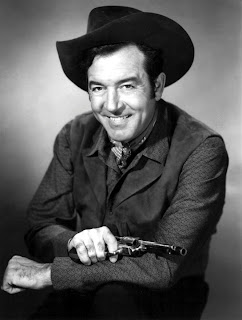André Mignier dit* Lagace, my 8th great grandfather, was born 1640 on Saint-Martin-de-Ré -- an island off the coast of France. He was the son of Michel Mignier (1602 - 1678) and Catherine Masson (1620 - 1669).
André was a French soldier assigned to the Carignan-Salières Regiment that had been sent to Quebec in 1665 by King Louis XIV to protect the French settlers from marauding Iroquois Indians, who were raiding and slaughtering the early colonists.
The Carignan regiment was originally formed as a private army in 1644 by Thomas Francois de Savoie, Prince de Carignan. It was an army made up of hand-picked volunteers. The standards were very high and these men had to be physically strong, with a aggressive fighting spirit. The regiment had just returned from a successful engagement in the 1664 Hungarian campaign against the Turks, when the King agreed to send the soldiers, armed with matchlock and flintlock muskets, to Canada to aid the settlers.
André was 24 years old when he came to Nouvelle-France (Canada) on June 30, 1665. In the army he was called by his nickname, La Gachette, which means "trigger" and is used to describe someone who can shoot with great ability -- a sharpshooter. La Gachette eventually evolved to be Lagacé.
During the winter of 1665-1666, André was stationed in Quebec City. Between 1666-1667, his regiment joined the famous campaign against the Iroquois, manning garrisons and launching attacks. By the end of this period, their task was accomplished and the countryside was peaceful. About 800 of the soldiers returned to France at this time, but 400 -- including André -- stayed with the promise of receiving land.
 |
Settlers welcome the King's Daughters to Nouvelle-France 1667
|
On October 14, 1668 André received a piece of land located in Charlesbourg, and on October 23, 1668, in Notre Dame Church of Quebec, Father Henri de Bernieres blessed the marriage of Andre' Mignier and Jacquette Michel (1637 - 1710) a fille du Roi**.
In 1682, André and his family moved to Riviere-Ouelle, Quebec.
He died 20 Nov 1727, at Sainte-Anne-de-la-Pocatière, Quebec, Canada
André's descendants -- in my direct line -- are:
GENERATION 2
Andre Mignier dit Lagace
Birth 4 Oct 1669 in Charlesbourg, Quebec, Canada
Death 4 February 1729 in Riviere Ouelle, Quebec, Canada
Married Francoise Ouellet 31 May 1701
GENERATION 3
Joseph Mignier dit Lagace
Birth 28 Dec 1706 in Rivière-du-Loup, Quebec, Canada
Death 1796 in Ste-Anne-de-la-Pocatière, Québec
Married Felicite Caouette 16 Aug 1730
GENERATION 4
Jean Baptiste Mignier Lagace
Birth abt 1749 in Sainte-Anne-de-la-Pocatière
Death 15 Sep 1828 in Québec, Quebec, Canada
Married Marie Judith Gravel Brindeliere 30 Oct 1775
GENERATION 5
Jean Baptiste Mignier Lagasse
Birth 24 Apr 1776 in Terrebonne, Quebec, Canada
Death before 1835 in St-Laurent (St-Laurent), Québec
Married Marie Angelique Baret dite Courville 21 Oct 1799
GENERATION 6
Marie Emélie Lagassé Meunier
Birth 24 Mar 1808 in Chateaugay, Quebec, Canada
Death 1883 in St-Antoine-Abbé, Quebec, Canada
Married Gabriel Pinsonneau 25 Oct 1824
GENERATION 7
Lucy Passino (Pinsonneau)
Birth 17 Jun 1836 in New York, United States
Death 2 Feb 1917 in Creston, Flathead, Montana, United States
Married John Galway Brown 23 Jan 1861
my 2nd great grandmother -- I am GENERATION 11
 |
I wonder if my love of shooting comes from André Mignier dit Lagace "The Trigger"?
|
|
* dit names found primarily in France and New France (French-Canada) are essentially an alias tacked on to a family name or surname. Dit in French is a form of the word dire, which means "to say," and in the case of dit names is translated loosely as "that is to say," or "called." Therefore, the first name is the family's original surname, passed down to them by an ancestor, while the "dit" name is the name the person or family is actually called or known as. Dit names are used by families, not specific individuals, and are usually passed down to future generations, either in place of the original surname, or in addition to it.
** fille du Roi: The King's Daughters (French) a term used to refer to the approximately 800 young French women who immigrated to New France between 1663 and 1673 as part of a program sponsored by Louis XIV. The program was designed to boost Canada's population both by encouraging male immigrants to settle there, and by promoting marriage, family formation and the birth of children. While women and girls certainly emigrated to New France both before and after this time period, they were not considered to be filles du roi, as the term refers to women and girls who were actively recruited by the government and whose travel to the colony was paid for by the king.


+Brown.jpg)

+topo.jpg)






.jpg)
.jpg)












